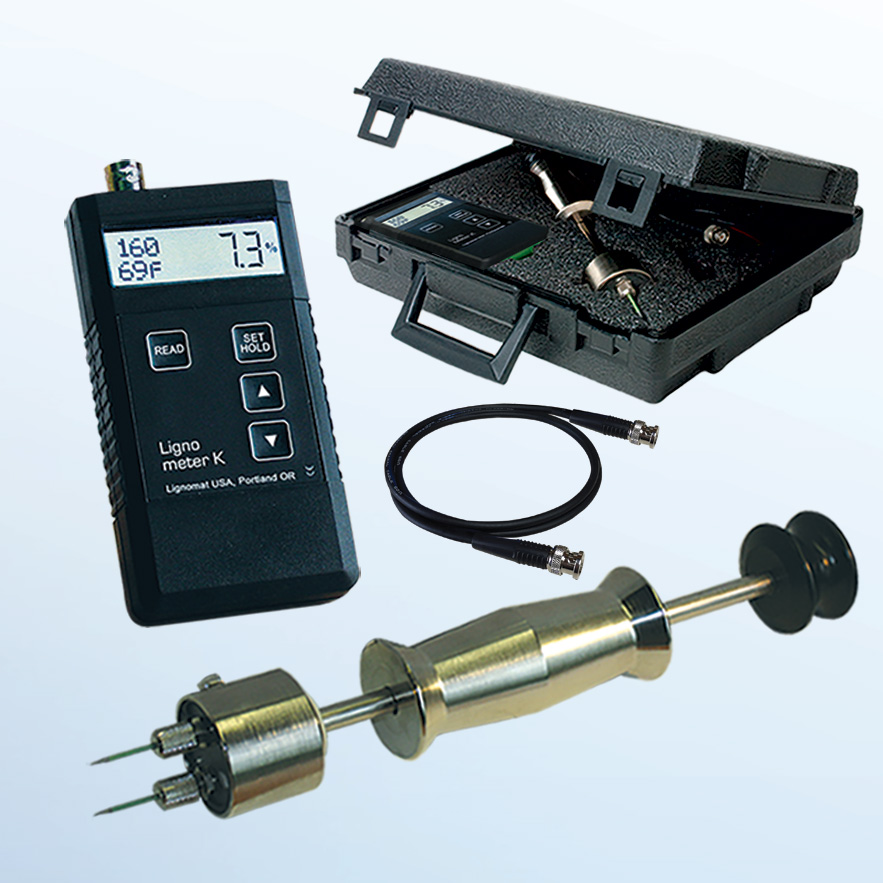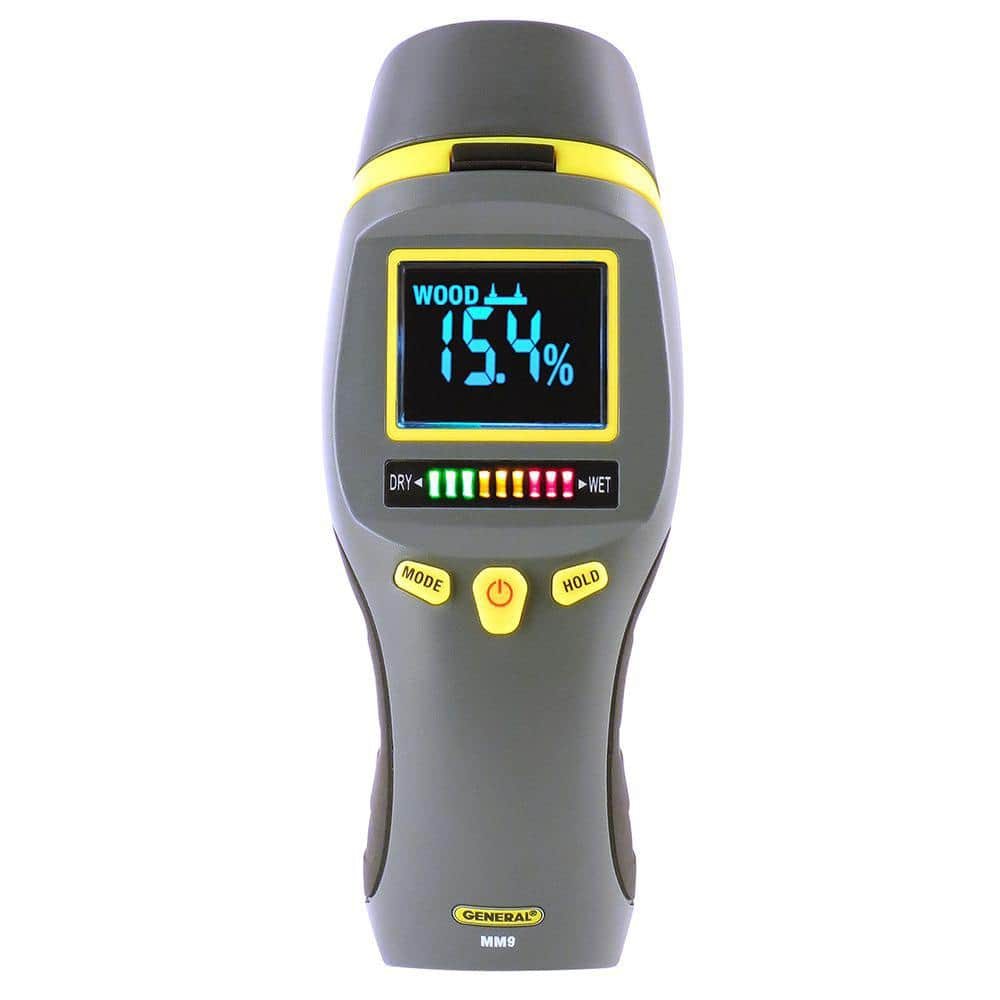Moisture Meter Reviews: Contrasting the most effective Designs for Professional and Do It Yourself Use
Moisture Meter Reviews: Contrasting the most effective Designs for Professional and Do It Yourself Use
Blog Article
Look Into the World of Moisture Meters: Every Little Thing You Need to Know
In the realm of dampness meters lies a globe of precision and usefulness that commonly goes unnoticed. Recognizing how moisture meters run, the various types offered, and their varied uses can lose light on their importance in making sure quality and effectiveness.
Just How Moisture Meters Work
Moisture meters operate by determining the electric conductivity or capacitance of materials to establish the moisture material existing. These meters are invaluable tools throughout numerous sectors, including farming, building and construction, and woodworking. By making use of various methods such as pin-type or pinless innovation, wetness meters give exact analyses that aid specialists make informed decisions.
Pin-type dampness meters function by putting the sharp pins into the material being tested. The electric conductivity between the pins is after that measured, with greater moisture degrees resulting in boosted conductivity. Moisture Meter. On the other hand, pinless wetness meters utilize electromagnetic signals to scan a larger area without creating any kind of damage to the material's surface. These meters are optimal for rapidly evaluating moisture levels in huge locations or completed items.
No matter the technique used, moisture meters play a critical duty in stopping problems such as mold development, structural damages, or item problems triggered by excess moisture. Understanding just how these meters work is essential for making certain the high quality and integrity of products in different applications.
Sorts Of Moisture Meters
Given the critical function moisture meters play in different industries, it is necessary to comprehend the various types readily available to experts for precisely assessing wetness levels - Moisture Meter. There are mostly two primary sorts of wetness meters: pinless and pin-type moisture meters

On the various other hand, pinless wetness meters make use of electromagnetic sensing unit plates to scan a bigger location of the material without triggering any damage. This kind is appropriate for promptly scanning big locations and is typically made use of for flooring, wall surfaces, and ceilings. Pinless meters are convenient for taking readings on completed surfaces without leaving any kind of visible marks.
Both sorts of dampness meters have their advantages and are chosen based on the details requirements of the task handy. Comprehending the distinctions in between these types is crucial for specialists to make accurate wetness analyses.
Applications Throughout Industries
With diverse performances, dampness meters find extensive application throughout numerous sectors, aiding experts in making sure optimum conditions for materials and structures. In the farming field, moisture meters are invaluable for identifying the wetness web content in grains, seeds, and hay, making certain quality control and avoiding mold growth. Construction experts depend on wetness meters to assess the moisture levels in building materials like wood, drywall, and concrete, which is critical for keeping architectural integrity and stopping problems like rot or mold. The flooring industry utilizes moisture meters to gauge the dampness web content in subfloors before setting up different floor coverings, preventing pricey problems because of excess wetness. Furthermore, in the food industry, moisture meters are utilized to keep track of and control moisture levels in items such as grains, nuts, and dried fruits to maintain quality and top quality. Additionally, dampness meters play an important role in the reconstruction and damages evaluation market by helping specialists determine and address water damage in structures quickly. Throughout these diverse industries, moisture meters are vital tools for making certain the high quality, safety, and long life click for more info of various products and products.
Tips for Using Moisture Meters
Use the dampness meter's calibration setups to guarantee accurate readings when determining the wetness web content in various materials. Calibration is essential for the appropriate functioning of a dampness meter. Prior to each use, it is advisable to examine and change the calibration setups according to the particular material being tested. Additionally, make certain the meter is set to the appropriate moisture range for the material you are gauging to get the most specific outcomes.
When using a pin-type moisture meter, insert the pins to the suitable deepness advised for the product being evaluated. This makes sure that the dampness analyses are taken from the appropriate depth within the material, giving a much more accurate representation of its moisture material. For pinless moisture meters, remember to maintain correct call with the material's surface area to obtain trusted analyses.
Routinely check and change the batteries in your dampness meter to avoid inaccurate analyses as a result of low power. Store the meter in a completely dry and safe location when not in usage to extend its life-span and maintain its precision. By adhering to these ideas, you can optimize the efficiency of your moisture meter and acquire precise wetness material dimensions throughout different products.
Upkeep and Calibration
To guarantee the accuracy of moisture content measurements, normal upkeep and calibration of the dampness meter are crucial actions in its appropriate functioning. Calibration adjusts the moisture meter to ensure that it provides reliable and consistent outcomes.
Calibration needs to look these up be done regularly, particularly if the moisture meter is made use of regularly or in important applications where specific dimensions are needed. Numerous moisture meters feature calibration tools or can be calibrated by specialist solutions. Moisture Meter. It is recommended to maintain a log of calibration days and results to track the performance of the dampness meter over time. By preserving and calibrating the moisture meter consistently, individuals can trust the precision of the moisture web content measurements obtained.
Verdict

To conclude, moisture meters play a vital duty in various industries by precisely gauging the dampness content of materials. Comprehending just how these tools work, the different types offered, and appropriate upkeep and calibration are crucial for obtaining reputable outcomes. Whether in construction, manufacturing, or agriculture, making use of moisture meters helps ensure quality control and efficiency in processes.

In final thought, moisture meters play an important role in various sectors by properly determining the moisture content of products.
Report this page